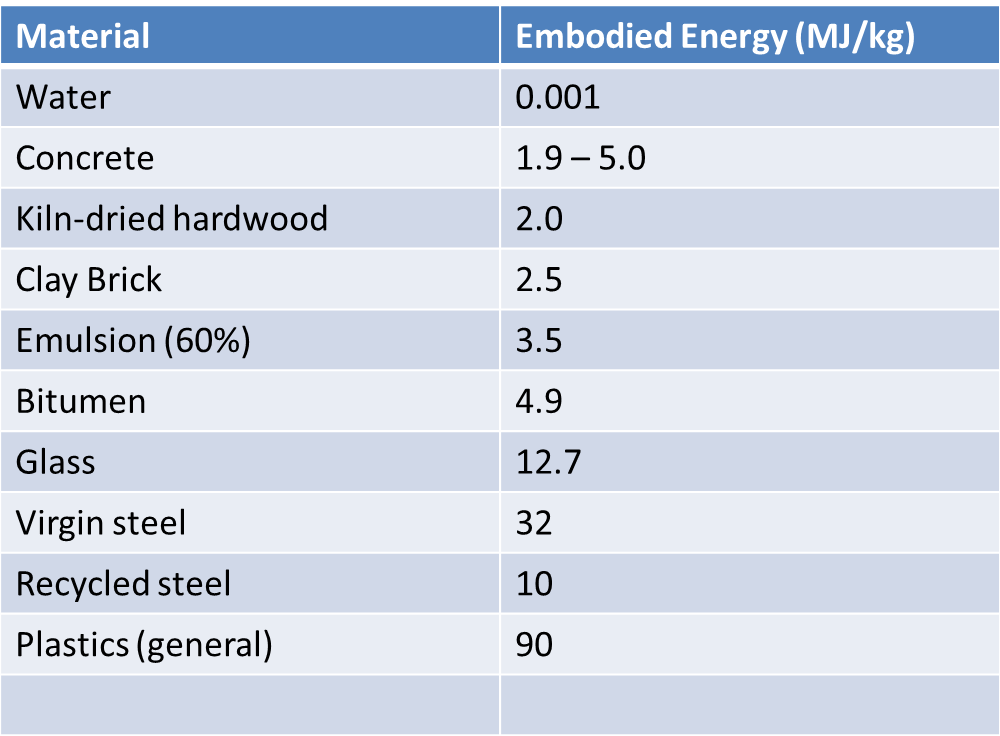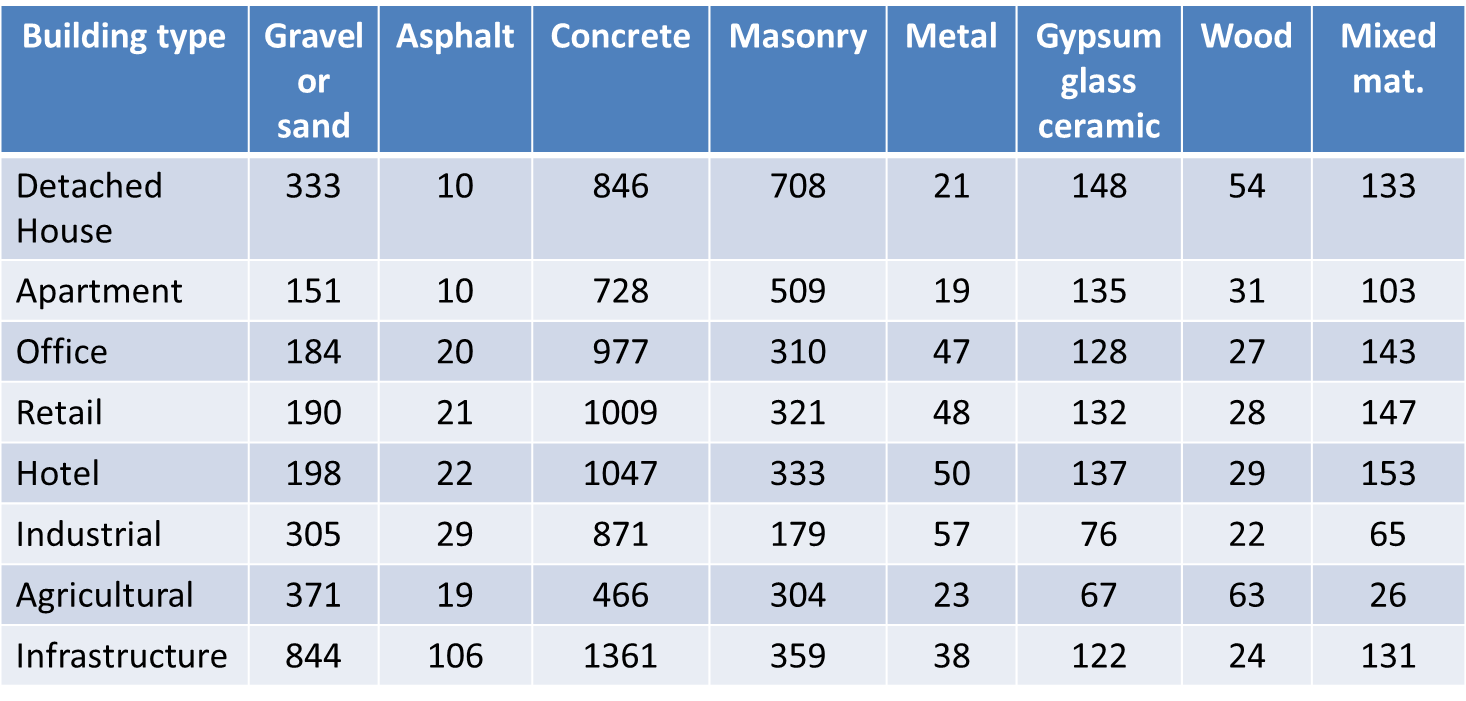Week 12 - Materials
5. The Natural Step
5.2. Materials selection
The sustainability of materials may be concerned from various viewpoints. For example, we are depleting our natural resources and producing waste materials which do not biodegrade easily. Many of the materials produce emissions of undesirable chemicals which may add to poor indoor air quality. Transportation involves energy consumption and has associated pollution produced. An approximate measure of the energy (pr unit mass) typically needed to produce a building product is known as its embodied energy. This is a more technical way of evaluating a materials but needs to include energy requirements for:

- Raw material acquisition
- Product manufacture
- Upstream energy use (e.g. construction and operation of factory)
The table shows some estimations for the embodied energy of some common materials (adapted from Means, 2011 and Rudman & Jenkins, 2012). Processes, such as recycling, become more important for products with higher embodied energy. This is however only part of the environmental picture and should be considered alongside a larger energy scenario. This scenario should include consideration of the climate, site, building design and life cycle as a whole system.
Other important factors associated with a material are its durability, reuse/recycling potential and the environmental impacts associated with its production, use and end of life (Means, 2011).
Minimising the environmental impacts of building materials means prioritising as demonstrated below:
- Reduce materials use (this may include the rejection of finishing touches which add aesthetically or may include designing for end of life deconstruction.
- Reuse existing structures (minimisation of new resource use by upgrading/renovating the existing structure.
- Use materials created from renewable resources (closing the material loop via organic recycling).
- Reuse building components (from deconstructed buildings
- Use recyclable and recycled content materials (this is often very difficult because only very few building materials are recyclable (e.g metals and plastics) without the loss of strength or durability.
- Use locally produced materials. However challenges arise when defining "local" and also some better longer lasting material may be rejected based on location.

Table adapted from KÖnig et al, 2010.